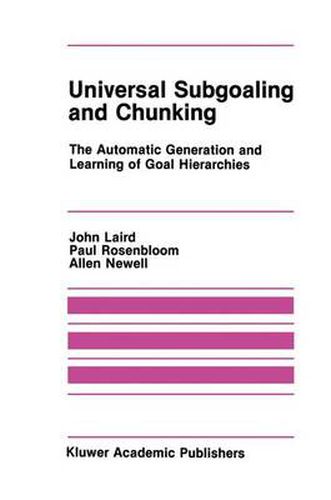Readings Newsletter
Become a Readings Member to make your shopping experience even easier.
Sign in or sign up for free!
You’re not far away from qualifying for FREE standard shipping within Australia
You’ve qualified for FREE standard shipping within Australia
The cart is loading…






This title is printed to order. This book may have been self-published. If so, we cannot guarantee the quality of the content. In the main most books will have gone through the editing process however some may not. We therefore suggest that you be aware of this before ordering this book. If in doubt check either the author or publisher’s details as we are unable to accept any returns unless they are faulty. Please contact us if you have any questions.
Rarely do research paths diverge and converge as neatly and productively as the paths exemplified by the two efforts contained in this book. The story behind these researches is worth recounting. The story, as far as I’m concerned, starts back in the Fall of1976, when John Laird and Paul Rosenbloom, as new graduate students in computer science at Carnegie-Mellon University, joined the Instructible Production System (IPS) project (Rychener, Forgy, Langley, McDermott, Newell, Ramakrishna, 1977; Rychener & Newell, 1978). In those days, production systems were either small or special or both (Newell, 1973; Shortliffe, 1976). Mike Rychener had just completed his thesis (Rychener, 1976), showing how production systems could effectively and perspicuously program the full array of artificial intelligence (AI) systems, by creating versions of Studellt (done in an earlier study, Rychener 1975), EPAM, GPS, King-Pawn-King endgames, a toy-blocks problem solver, and a natural-language input system that connected to the blocks-world system.
$9.00 standard shipping within Australia
FREE standard shipping within Australia for orders over $100.00
Express & International shipping calculated at checkout
This title is printed to order. This book may have been self-published. If so, we cannot guarantee the quality of the content. In the main most books will have gone through the editing process however some may not. We therefore suggest that you be aware of this before ordering this book. If in doubt check either the author or publisher’s details as we are unable to accept any returns unless they are faulty. Please contact us if you have any questions.
Rarely do research paths diverge and converge as neatly and productively as the paths exemplified by the two efforts contained in this book. The story behind these researches is worth recounting. The story, as far as I’m concerned, starts back in the Fall of1976, when John Laird and Paul Rosenbloom, as new graduate students in computer science at Carnegie-Mellon University, joined the Instructible Production System (IPS) project (Rychener, Forgy, Langley, McDermott, Newell, Ramakrishna, 1977; Rychener & Newell, 1978). In those days, production systems were either small or special or both (Newell, 1973; Shortliffe, 1976). Mike Rychener had just completed his thesis (Rychener, 1976), showing how production systems could effectively and perspicuously program the full array of artificial intelligence (AI) systems, by creating versions of Studellt (done in an earlier study, Rychener 1975), EPAM, GPS, King-Pawn-King endgames, a toy-blocks problem solver, and a natural-language input system that connected to the blocks-world system.